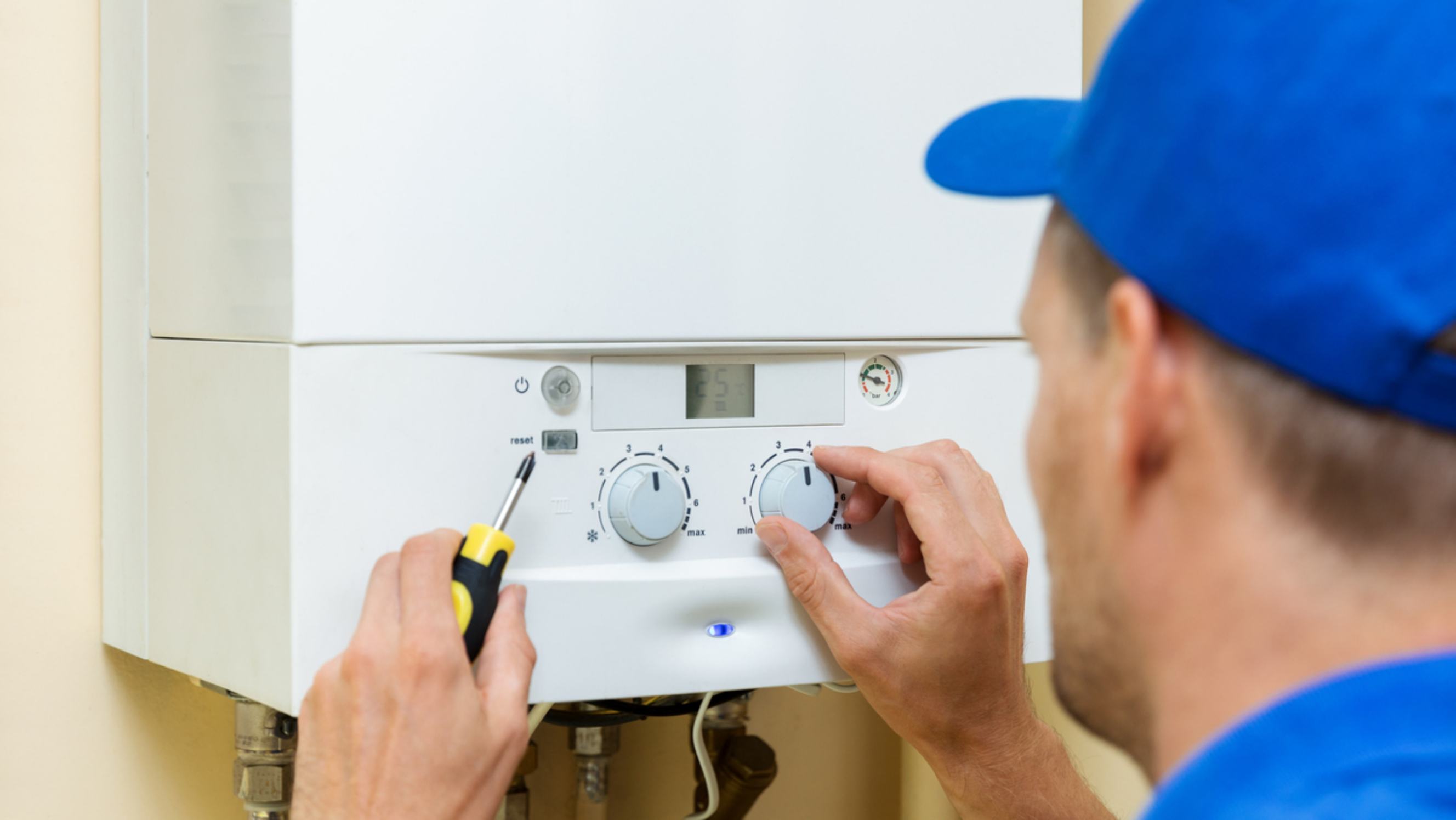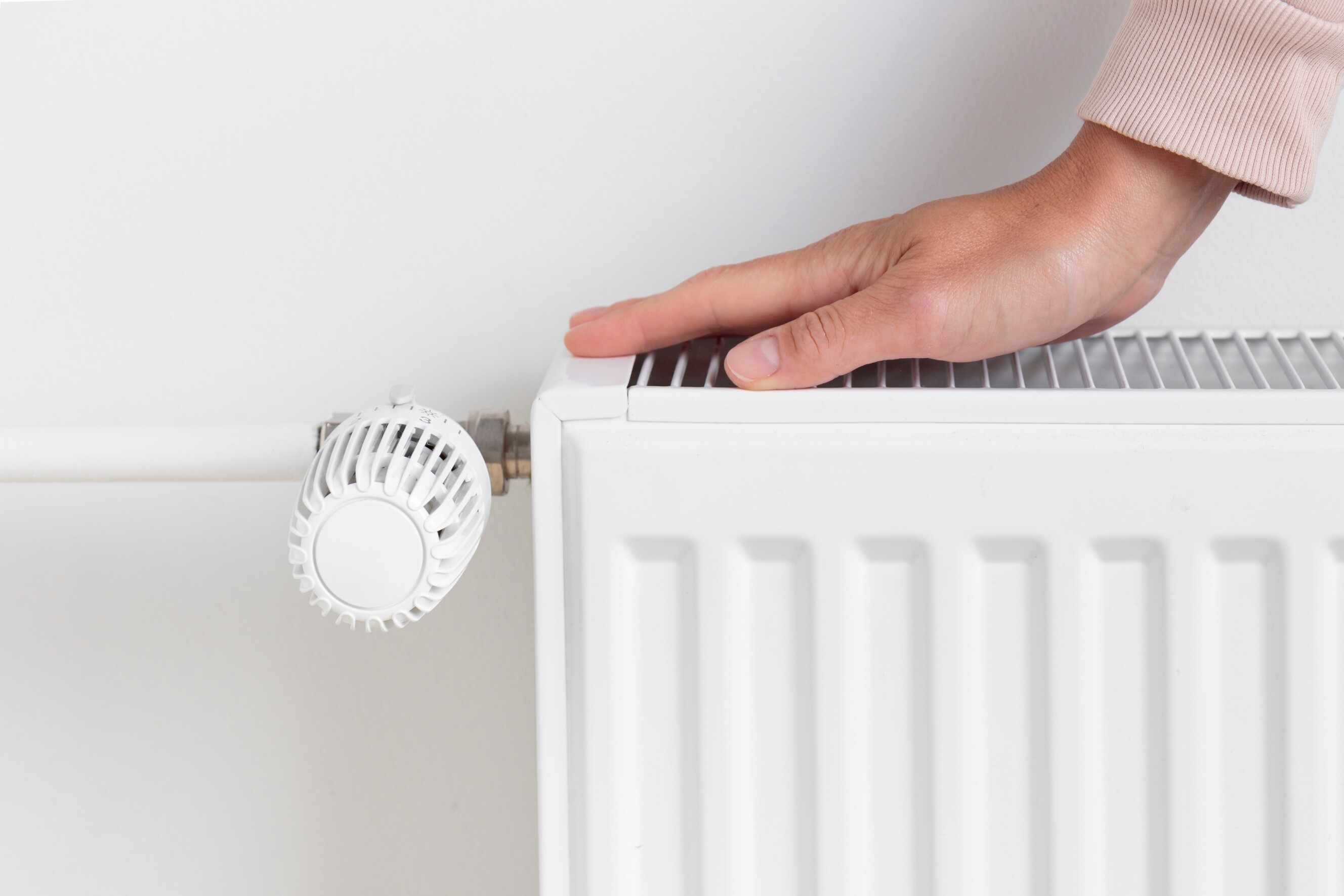
- Home/
- Comparisons/
- Heating & Cooling/
- Underfloor Heating vs Radiators
Underfloor heating vs radiators: Which is the better choice?
Comparing underfloor heating and radiators based on their installation process, running costs, energy efficiency, and more.
Published on
Key Facts
- Underfloor heating is a modern central heating system that spreads warmth through the floorboards of a house. Heat is distributed evenly through pipes or cables using hot water or electricity.
- Radiators are commonly mounted on the walls of houses and connected to an existing central heating system. The energy used in radiators circulates through metal panels or pipes to release heat through convection.
Is your home warm enough to keep you comfortable throughout the fall and winter? One of our first priorities should be making sure our homes are ready to withstand those long, chilly nights. Because of this, it's critical to weigh the unique benefits of underfloor heating vs radiators.
This guide aims to assist you in selecting the ideal heating system for your house based on important factors including price, heating speed, and space required. It'll also address some of the more frequent queries that buyers may have when comparing radiators vs underfloor heating
What is underfloor heating?
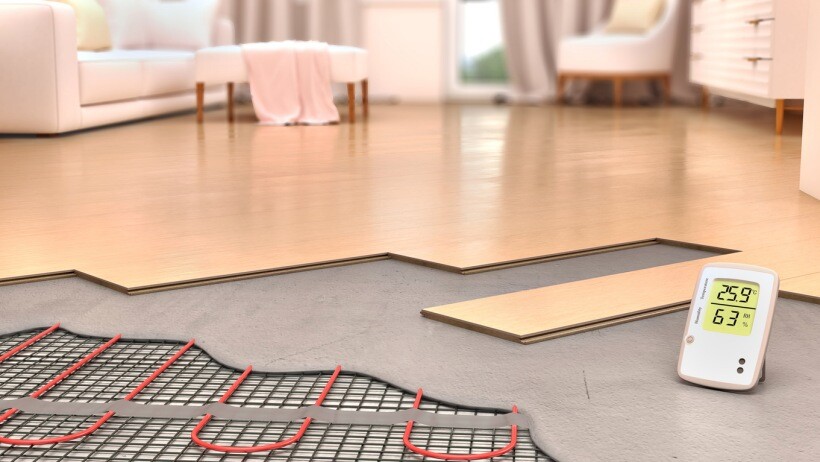
Underfloor heating (UHF) is a modern heating system that warms rooms from the ground up. This system is perfect for spaces where radiators or boilers might take up too much space in your home.
There are two types of underfloor heating: electric and water-based. An electric UFH system uses electric mats or loose cables to evenly distribute heat, while a water-based one relies on heated water running through pipes.
What are radiators?
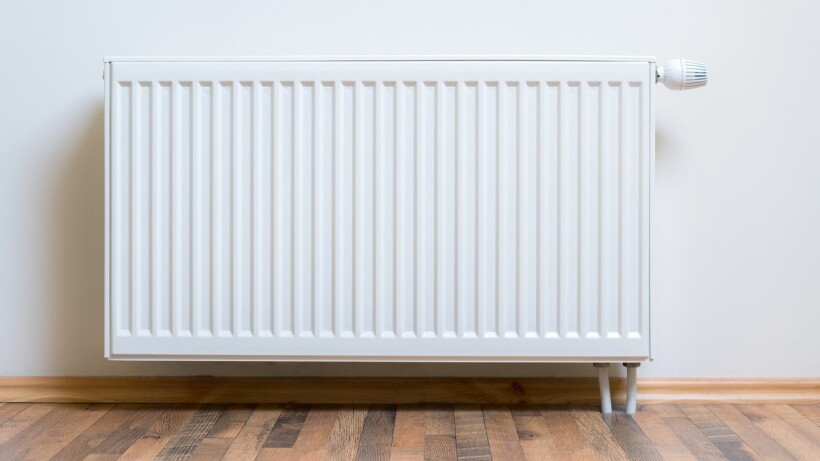
Radiators are connected to a central heating system and powered by electricity, gas, or heated water. The energy used in radiators circulates through metal panels or pipes to release heat through convection. There are four common types of metal used in radiators: mild steel, aluminium, stainless steel, and cast iron.
Radiators vs underfloor heating: How do they differ?
If you want to know whether radiators or underfloor heating would suit your home more, you must first consider multiple factors like space, budget, and energy usage. This section aims to hopefully provide you some more insight and clarity before you make your decision.
In terms of comfort
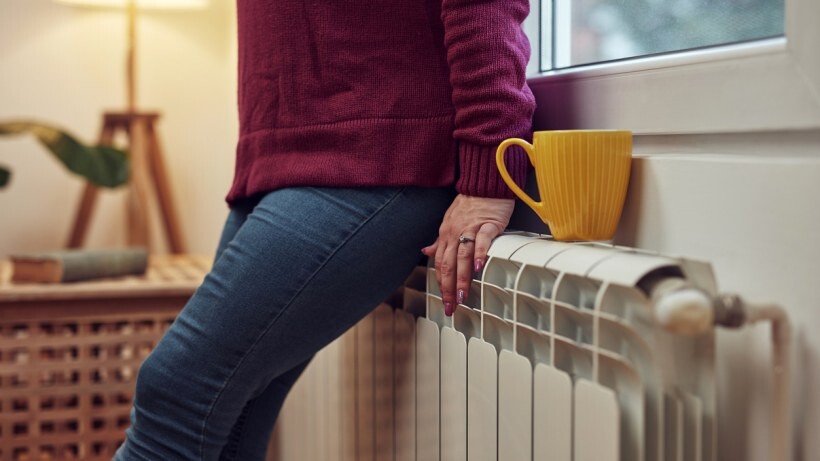
If you want to feel warm throughout your home, underfloor heating delivers a more uniform heat distribution. Compared to the convection heat of radiators, the radiant heat spread by underfloor heating also provides better air quality, keeping air fresh at all times. Also, you don’t need to worry about young children touching hot surfaces or the sharp edges of radiators, making underfloor heating a safer and more comfortable choice for families.
On the other hand, since radiators are mounted on walls, heat doesn’t spread too far from the source. This can result in uneven heat distribution in your home, leading to overall discomfort and cold spots, especially if your house has lots of large spaces.
In terms of energy efficiency
Underfloor heating systems are typically more energy-efficient than radiators. Because the floor area of a room is greater than the small surface area used by radiators, an underfloor heating system sometimes only requires temperatures as low as 35°C to efficiently heat a room. This lower input temperature is where you’ll see the most potential to save energy during colder weather.
In contrast, radiators generally require high temperatures as high as 70°C-80°C to effectively heat the area nearest to them. While it’s possible to waste less energy by using electric radiators, different radiator materials will also have different effects on its energy efficiency.
In terms of heating speed
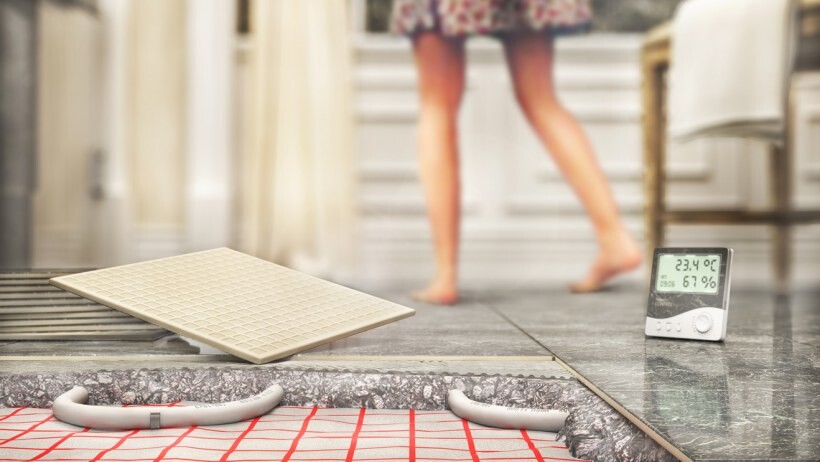
While underfloor heating evenly distributes heat around the room, it can take longer to reach the desired temperature than radiators. This gradual increase in temperature could be a potential drawback for some, especially if you prefer to get warm quickly.
Meanwhile, radiators heat up the area around them more due to their smaller size and high input temperature requirements. This makes them suitable for homes where rapid heating is essential and wanted. In fact, it’s even become a recent bathroom design trend to install a radiator in your bathroom to keep the room warm, dry, and mould-free.
In terms of installation
Underfloor heating installation can somehow be both disruptive and easy. Installing underfloor heating systems requires you to take up the whole floor, laying down either pipes or cables beneath. While there may be step-by-step guides on how to install these heating systems, it's important to remember that it's always best to leave it to the pros to avoid costly installation mistakes. And once installed, you’ll need the help of a qualified electrician to connect your heating system to the main power.
Meanwhile, radiator installation is simpler and faster overall. Radiators are usually mounted on walls, and installation just requires connecting them to an already existing central heating system such as a heat pump or a boiler. And while that does sound simple enough, it’s still best to leave installation to the pros to avoid any risks that come with doing the installation by yourself.
In terms of space requirements
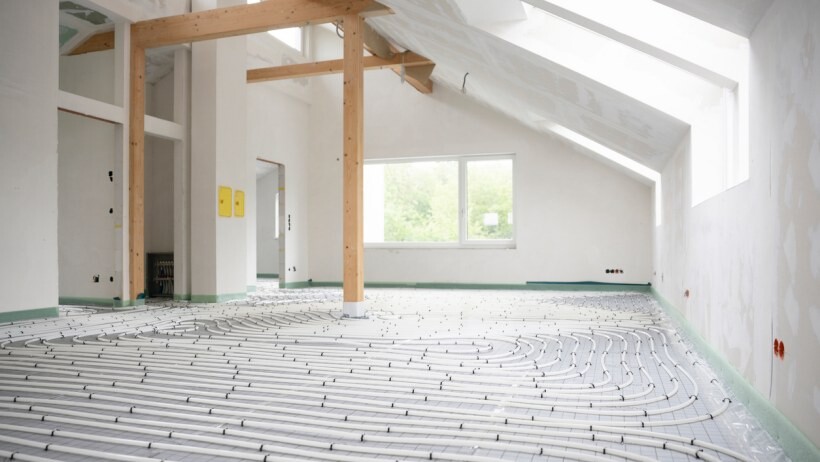
Depending on your household’s needs, space efficiency can be a significant factor when it comes to choosing your preferred heating system.
Underfloor heating can be very space-saving, making it particularly beneficial in modern houses prioritising a clutter-free space. In contrast, traditional radiators require wall space for installation. This can be potentially limiting when it comes to layout and design options for your rooms. Additionally, the room size typically influences the size of the radiator that’s required to completely heat up the space.
In terms of installation and running costs
The cost of running electric underfloor heating vs radiators varies depending on energy sources and system efficiency. For example, electric underfloor heating can be more expensive to run, especially if used frequently. But, as mentioned before, underfloor heating systems use less power, potentially leading to lower energy bills.
Installing underfloor heating systems usually costs around £200-£300 per day for contractors and an additional £100-£200 if you want high-quality insulation and a thermostat.
As for how much it costs to run your UHF, it costs £10-£11 a month to heat up a 4m² room for four hours a day on average. While it has lower running costs, it's important to note that the initial installation costs are typically higher than radiators. So, while you may save on running costs in the long term, you'll need to consider your upfront investment.
Radiators, on the other hand, generally have higher running costs than a UHF system since they require higher temperatures to effectively heat the area closest to them. These running costs are tied to the efficiency of the system, radiator materials, and the type of power used. Plus, radiators require more regular upkeep, with them making regular appearances on home maintenance checklists.
As for the cost of installing radiators, it usually ranges from £200-£700 per radiator and £50-£100 for labour costs.
Hire expert installers for your heating system on Airtasker
If you’ve already decided on what to get for your home, it’s time to get started on either your radiator or underfloor heating installation. Say goodbye to cold spots and stay warm and cosy this winter.
With Airtasker, you can get in touch with heating and cooling system experts who can help you install your preferred heating system professionally.
If you’re still unsure on what heating system to install for your home, freely revisit the table below and post a task on Airtasker once you’re ready.
Underfloor heating vs radiators
| Underfloor Heating Systems |
Radiators | |
| Installation |
More pricey and has potential to be disruptive |
More cost-effective and simpler |
| Comfort |
More consistent comfort due to even heating distribution |
Inconsistent comfort level due to uneven temperature distribution |
| Running Costs |
Potential to be cheaper based on the materials used |
Cheaper, but requires more regular maintenance |
| Energy Efficiency |
Less power is required to heat up a space evenly |
More power is required to heat up a portion of a room |
| Space Requirements |
Space-saving; works under all floor coverings |
Requires free wall spaces in various sizes |
| Heating Speed |
Slower and more gradual, but more evenly distributed |
Faster because of its smaller size and temperature requirement |
FAQs on underfloor heating vs radiators
Yes, underfloor heating can replace radiators. It’s just a matter of whether or not your home is ready to make that switch. Also, to determine whether or not underfloor heating can be your only source of heat, conduct a heat loss calculation before making a decision.
Yes, you can have underfloor heating on all floor surfaces and coverings such as wood, laminate, carpet, and more. You can even have underfloor heating installed under driveways and walkways.
Wet underfloor heating systems are more eco-friendly and are best for large spaces. Dry underfloor heating systems favour smaller spaces because of their higher running costs.
Find heating and cooling services, fast
Post a task
Related articles
